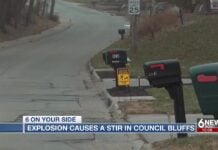Was the mysterious Lake Cheko formed by the exploding Tunguska meteorite?
Russian scientists deny theory of respected Italian team by ‘proving’ that the remote blue lake is older than the famous 1908. Lake Cheko is located some 8 km from the supposed ground zero of the Tungiska Event.
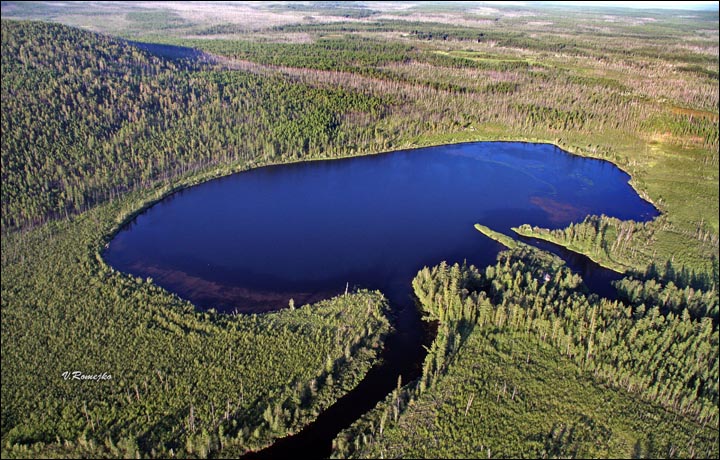
The so-called Tunguska event, 109 years ago, remains an intriguing challenge for modern science and the subject of sharp disagreement among authorities.
What is known is this: on 20 June 1908, a large fireball crossed the sky above the taiga over the Stony Tunguska River, and a mega explosion followed. The huge boom was heard in villages 1,200 kilometres away and impacted atmospheric pressure up to Britain. Some 2,000 square km (770 square miles) of forest was flattened, around 80 million trees, thousands of charred carcasses of reindeer were strewn on the ground. The explosion some 9 km above the surface was equivalent to 185 Hiroshima bombs, yet it was in one of Siberia’s most remote areas and there were no reports of human fatalities.
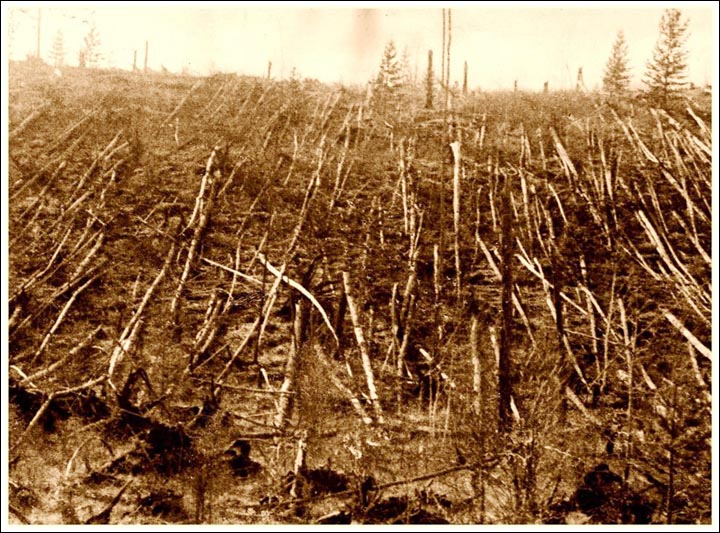
To witnesses, it appeared like Armageddon. One, 65 km away, was thrown from his chair by the heat blast. ‘Suddenly…the sky was split in two, and high above the forest the whole northern part of the sky appeared covered with fire… at that moment there was a bang in the sky and a mighty crash. The crash was followed by a noise like stones falling from the sky, or of guns firing. The earth trembled.‘
Another explains: ‘I became so hot I couldn’t bear it, as if my shirt was on fire. I wanted to tear off my shirt and throw it down, and then the sky slammed shut. A strong thump sounded and I was thrown a few yards.‘
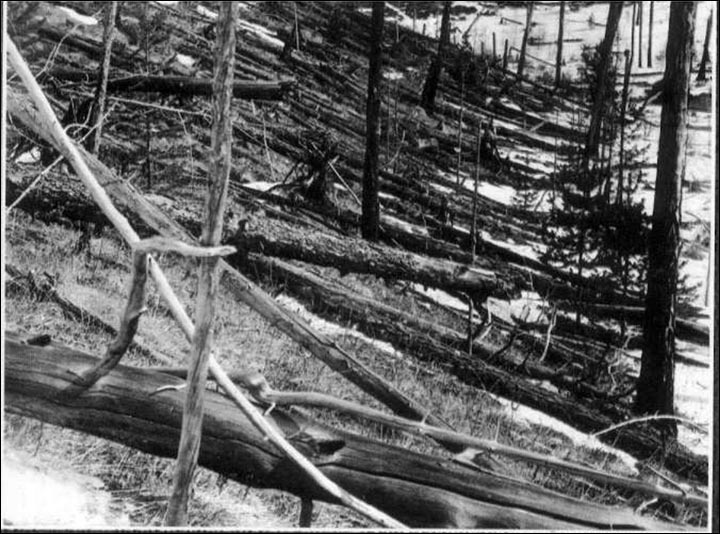
In the following days, Europe was treated to a sky show of silvery, glowing clouds, colourful sunsets and a strange nighttime luminescence. In England, it was light enough at midnight to play cricket and golf. Its impact was noticed by both the Smithsonian Astrophysical Observatory and the Mount Wilson Observatory, in the east and west of the USA, with the night sky glowing bright enough for people to read by its light.
The cause
It was reported early on as a meteorite falling to earth in Krasnoyarsk region, while foreign newspapers speculated on a volcanic eruption or even a UFO. Other explanations were: a comet made of ice not rock that evaporated in the atmosphere; local Evanki people believed a visitation by the god Ogdy was responsible; some scientists claimed a black hole had collided with Earth; other sources asserted friendly aliens had shot down a meteorite that could have destroyed the planet.
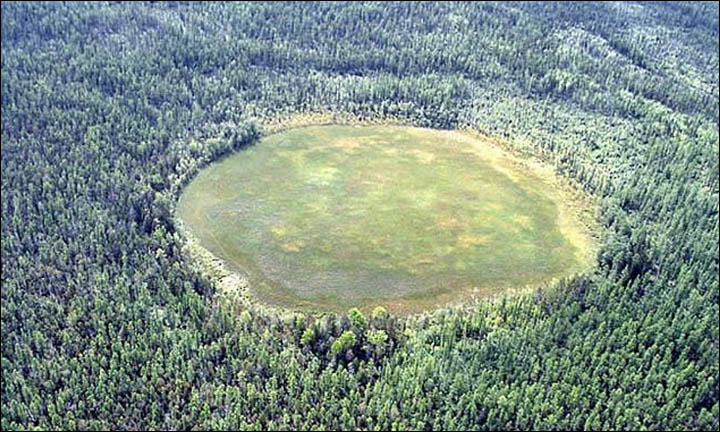
It took decades – and only after the 1917 Bolshevik Revolution – for the area to be properly investigated, and expeditions led by Russian mineralogist Leonid Kulik led to a conundrum which still puzzles scientists: if it was a meteorite, where are the craters and the extraterrestrial matter?
Lake Cheko
A decade ago, a research team from Italy’s University of Bologna led by Luca Gasperini pointed to small bowl-shaped 500-metre diameter Lake Cheko as the impact crater. It is located some 8 km from the supposed ground zero of the Tungiska Event; it had not been marked on maps previously; seismic measurements of its bottom indicated that sediment had been building for around a century; and that the depth of the lake – which is shaped like a crater – was deeper than is typical for the region. They also concluded there is dense stony matter beneath the floor and sediment, the ‘remnant’ of the exploding meteorite.
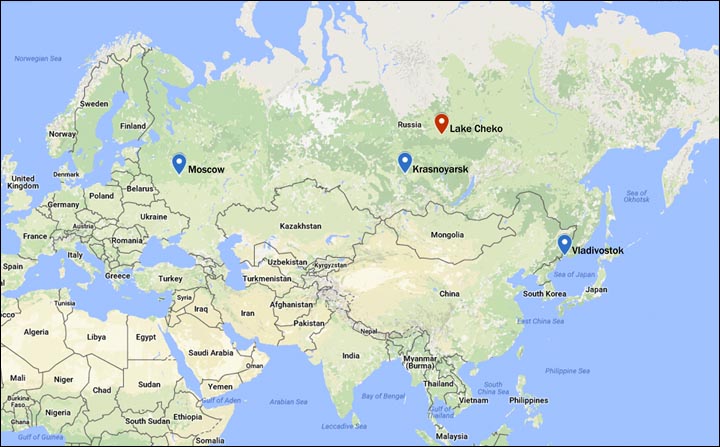
They reported that seismic reflection and magnetic data revealed an anomaly close to the lake’s centre, less than 10 metres below the floor. This anomaly was compatible with the presence of a buried stony object and supports the notion Cheko is a an impact crater lake, they concluded.
The Italian team has also previously argued that flattened trees show that ‘two bodies entered the atmosphere. One exploded about five miles (8km) above ground, while the other hit the Earth where Lake Cheko is now’.
New research
Russian scientists have now taken a closer look at Lake Cheko, and strongly dispute the Italian theory. They suggest the area was badly mapped and there is nothing surprising about Cheko not appearing on old maps.
Researchers from Krasnoyarsk and Novosibirsk assessed the age of the lake undertaking geochemical and biochemical analysis of the bottom sediments.
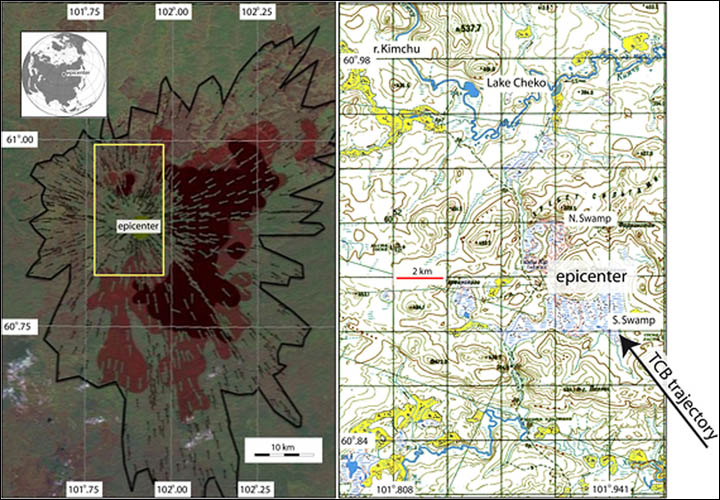
Recently their colleagues from the Institute of Geology and Mineralogy, Siberian Branch of The Russian Academy of Sciences (RAS) completed radioscopic analysis of the core samples.
The study indicates that the deepest sample they obtained is about 280 years old, which means that the lake is probably even older, because the researchers did not manage to obtain samples from the very bottom. So geologically the lake appears young: but not young enough to be a crater lake caused by Tunguska.
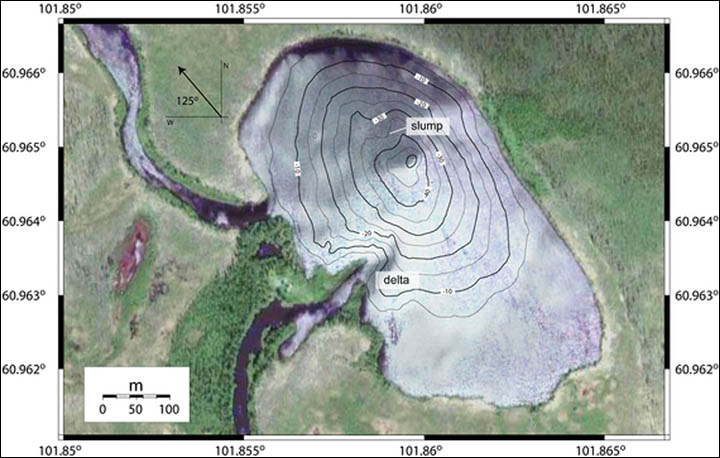
‘Besides, there are other deep, practically round lakes in the Tunguska reserve, which look like Lake Cheko and probably have the same geological origin,’ said a statement from the expedition centre of the Russian Geographical Society in the Siberian Federal District.
The best theory?
The most likely theory appears to be that the celestial objects exploded and were destroyed in the atmosphere to the extent that only tiny particles of cosmic dust ended up on the surface.
A 2013 study found rock samples of meteoric origin with traces of a carbon mineral called lonsdaleite, known to form when meteorites crash to Earth.
Mystery remains
But were these from the Tunguska event or unreleated meteor showers?
If the Tunguska explosion did not cause this mysterious lake to form, what did? It does not appear to be ancient, perhaps only hundreds or thousands of years old.








